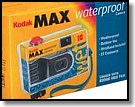

 |
 |
1 - Raft Knife
The raft knife is the one that comes attached to the raft to be used to cut the painter if necessary (though by regulation and design the painter should break free before the raft is submerged). The knife is supposed to be designed so it is almost impossible to harm the raft or you or another person in the often wild moments immediately after an abandonment. This can be a "zip" style or a conventional style, but both are much useless for anything else except opening plastic bags and such. You should know where to find it when you board the raft. It should be close by the painter attachment point, but "close" is subject to interpretation. Some are outside on the canopy, others inside.
1+ - Survival Knife
The argument over whether this should have a blunt tip or not will probably go on forever. USCG and SOLAS insist on a blunt tipped jack (folding) knife. All I have seen that are included in rafts are of questionable design and quality. Certainly, given the exigencies of using a knife on a boat or in a raft at sea, a blunt tip can prevent injury to both person and the raft. However, as a primary survival knife, a blunt tipped blade will be found wanting.
Talk to a few survivors who have been there, or read their accounts, and they will tell you how useful a real pointed tip is and how much they wished for one, if they didn't have it. From my point of view, the best situation is to have both a blunt sheepsfoot blade, for use in rough seas for example, and a pointed tip blade for your primary survival knife.
Ideally, this should be a sturdy fixed blade knife in a plastic (not cloth or leather) sheath, not a folding knife. It should be single edged, not double edged as many "dive knives" are. A quality folding knife with a locking blade would make a good back-up to your primary survival knife and can provide the blunt safety tipped blade.
This is one instance where you don't want a high carbon stainless steel blade. Water, particularly salt water, and high carbon stainless do not go together. This means it will not hold an edge quite as well, but that is a compromise you have to accept. In all other respects, the recommendations in our section on knives hold true for this sort of use as well. Even at sea, a knife is a primary survival tool. Don't skimp!
This can serve as your back-up knife (though I would hope all survivors are equipped with their own folding knife of some sort, which they keep on their person at all times), and depending on your choice of tool, can include the sheepsfoot safety blade (as manufactured or altered by you) discussed above. This tool will also serve as substitute for things like can openers, pliers, and others that are normally included on lists such as this.
1 - Knife Sharpener
While I prefer diamond sharpeners for most uses, they don't much like salt water, so you'll want either a conventional stone or a ceramic sharpener.
? - Navigation Equipment
What to pack depends in large part on what manner of survival craft you will be using. Life rafts are little able to influence where they go, though some make claim to limited sailing capability via various means. Dinghies, on the other hand, can be rowed or sailed if properly equipped.
So, even a compass is probably not much use in a typical life raft (though a basic compass could be useful if you make landfall), while a good hand compass with adjustable declination, sextant, tables, charting tools, and some waterproofed charts would be a real asset in other situations. Don't forget waterproof paper and pencils. Given the cost, few are likely to include a spare sextant, but try to ensure the boat's is handy to grab and stored in an appropriate case, not the fancy wooden one it likely came in, but something secure like a Pelican case (a good idea anyway).
There is also the possibility of packing a handheld waterproof GPS, the price of basic models is so low as to make it practical, though this is yet another electronic piece of equipment, with all that entails regarding reliability and useful life. If you plan to rely upon this as your primary navigation equipment, not a plan I would encourage, be sure to pack extra batteries and ensure it's really waterproof or in a waterproof enclosure.
If navigating after an abandonment is a possibility, I also recommend reading David Burch's "Emergency Navigation - Pathfinding Techniques for the Inquisitive and Prudent Mariner" and including in your Abandon Ship Bag the companion water resistant "Starpath Emergency Navigation Card"
2+ - Flashlights with spare bulbs and batteries
While the flashlights are handy when things go to hell-in-a-handbasket at night, they are also an important signaling device. However, it is not at all necessary for the flashlight to have a momentary pushbutton switch with which to signal. Simply moving the light off aim point is just as effective. This means you can select fully submersible scuba style lights (Pelican Products or Underwater Kinetics) that are inherently much more waterproof than traditional USCG approved flashlights or the generally inferior quality "torches" found in most foreign made life rafts. (Note the wrist lanyards, with sliding adjusters to cinch them up tight so they won't slip off, attached to the two Pelican flashlights illustrated here.)
While it is prudent to carry spare bulbs and batteries, there is a lot to be said for not having to open the flashlight to install them while in potentially very wet survival conditions. Thus, I recommend a number of smaller AA-cell lights instead of a single two or three D-cell flashlight. These are relatively inexpensive and very bright, but light and easier to handle and control as a result.
If you can standardize on one size battery for all your electronic equipment, that is an advantage, and most such gear is available that will run off AA-cell batteries. Lithium AA-cells are also readily available, if not inexpensive, and these are best for survival use with a very long shelf life, higher capacity and better cold weather performance. Spare batteries should be packaged in sets and vacuum bagged separately. The bulb or bulb module also should be protected from water damage and will also require protection from being crushed. A 35mm film container works excellent for the bulb(s) with some packing material to prevent rattling.
While a tightly focused beam is best for signaling use and some other needs, something like a multiple LED flashlight will give exceptional battery life. Though not as bright, the better ones will provide adequate illumination for most uses in and around the life raft.
1 - Headband For Holding Flashlight or Headlamp
The ability to work with both hands while lighting the work area with a flashlight can be a life-saver at times. The alternative to a simple headband would be a headlamp or an adaptable light such as one of Pelican's Versa-Brite series.
4+ - Chemical Light Sticks or Krill Lamps
If your raft is well equipped, it will have a central interior raft light, but few do. These can be powered by either a lithium cell battery or a water-activated battery. The lithium style can generally be switched as necessary, but often there is no good way to turn off the water-activated style (though some are designed so you can remove the cell from the water). In any case, once they have run out, any general illumination will have to come from an alternative source. If your raft is not equipped with an interior raft light, then some alternative source of general illumination upon first boarding the raft is critical at night. This is both a working advantage and better for morale in most instances. Flashlights are not the best source for this illumination.
Eight to 12 hour chemical light sticks (Cyalume, etc.) provide useful general illumination if hung from the canopy arch. The problem is that they cannot be turned off -- once activated, that's it. Also, care must be taken not to puncture the protective foil package in storage or in the raft, for they will not retain their useful life for long if not sealed. Finally, their light output in colder temperatures is significantly degraded.
Another option is the electroluminescent Krill Lamp which operates off a pair of AA-cells. They offer a host of advantages over the chem-sticks, including lasting far longer and being able to be switched off and on as needed. Using lithium batteries, their storage life is much longer as well. The downside is that they are electrically operated, with all that implies. For life raft use, I'd probably include a couple of both chemical light sticks and Krill Lamps.
1 - Diving Mask
Primarily to help perform raft maintenance and repairs underwater.
Not much use in the raft at all, but could be life-savers if you make landfall. My ditch kit includes a Spark-Lite flint fire starter and a half-dozen Fire-tab tinders in a waterproof G.I. match safe.
1 - Sewing Kit
This should include a variety of sturdy needles (stainless steel if you can find them), sewing awl, and a spool or two of waxed thread for use in making repairs and improvisations.
1 - Fishing Kit
The biggest problems with most of the fishing kits supplied with life rafts or prepackaged for life raft use are the lack of an easily gripped winder to hold and manage the line so it doesn't cut into your hand when "reeling-in" a fish, lack of wire leaders, and far too few hooks. In addition, the hooks included are never stainless steel. Actually, the biggest problem is that most of the fishing kits included with most rafts are virtually worthless, with very little equipment and what's there of dubious quality.
Despite the expense, it only makes sense to pack stainless steel hooks. Should you end up having to fish for sustenance, it is likely because you have not been able to effect a quick rescue. In other words, you may be there for a long while, and as such, fishing becomes your primary means to procure food. Hooks are small, light, and easily lost, so carry plenty. Most long term survival tales include descriptions of the survivor agonizing over the use of their few fishing hooks, lest they lose them. Include plenty so you can eliminate this worry
Some possible sources for a winder are a flat kite winder, available at many toy or hardware stores, or the Streamlines Casting Handline (illustrated above). Both offer a decent grip and are large enough to be practical while still small enough to pack well.
Remember, you are not going big game fishing, you can't risk damaging the raft fighting a large fish, so your tackle needs to be sized for the small to moderate size fish you can safely handle. You may still find yourself cutting loose a larger shark, sacrificing some line, leader and hook for safety's sake.
Suggested fishing kit contents:
400 ft. - Monofilament Fishing Line, 20 lb. test 36+ - Barbed Hooks, size 2/0 36+ - Barbed Hooks, size 2 24+ - Barbed Hooks, size 6 6 - Barbed Treble Hooks, size 1 6 - Barbed Treble Hooks, size 6 6 - Barbed Treble Hooks, size 8 or 10 24 - Nylon Leaders w/ Snap Swivels, 10-12 inch 12 - Wire Leaders w/ Snap Swivels, 8 inch 24 - Snap Swivels 24 - Assorted Sinkers 12 - Chrome Spoons and Lures 3 - Straight Shank Hook, size 9/0 (for gaffing) 2 - Winders 1 - Waterproof Fishing Instruction Booklet including illustrations of fishing knots
2 pr. - Gloves
These should be sturdy well-oiled leather or coated man-made material that will withstand immersion in water and damp conditions while protecting your hands when fishing and performing other chores where your hands could be susceptible to injury. Non-slip gripping areas would be an asset.
1 - Spear Gun
Survivor Steve Callahan, with whom I have shared a few hours of life raft time in survival exercises, as well as others swear by a spear gun, as opposed to relying solely on fishing tackle. A decent one with a set of spare power bands, shafts, and heads will set you back a pretty penny. Inexpensive models may not stand up to the rigors of survival. Even the most compact designs won't likely fit inside your abandon ship bag or case, even if disassembled, so you'll need to make other arrangements for storage and to make sure it goes with you when you leave. An alternative may be a hand spear, some of which are available in compact folding models.
1 - Cutting Board
This will protect the raft when cleaning fish and other seafood and will provide a hard work surface upon which to make repairs and improvisations. Should be impervious to saltwater. If using a soft-sided bag, size to fit fully in the bottom and it will make the bag much easier to handle. Be sure all edges and corners are smooth and rounded to prevent damage to the bag or raft. Some paddles, which are included with some rafts, can be used as improvised cutting boards, but others are not flat enough or large enough to be useful.
1 - Collapsible Bucket, 1-2 gallon size
This might serve as your bailer, but useful for many purposes. Fabric or plastic, make sure if fabric it doesn't leak at the seams.
 1 - Camera
1 - Camera
You bet! I want pictures of your survival experience for the Web site, so please make sure you include at least one of those disposable waterproof cameras.
|
| SELECT AND USE OUTDOORS AND SURVIVAL EQUIPMENT, SUPPLIES AND TECHNIQUES AT YOUR OWN RISK. Please review the full WARNING & DISCLAIMER about information on this site. |
Publisher and Editor: Doug Ritter
Email: Doug Ritter
URL:
http://www.equipped.org/abandonship4.htm
Revision: 09 May 15, 2001
![]()
Email to: [email protected]
|
© 1999, 2000, 2001 Douglas S. Ritter & Equipped To Survive Foundation, Inc. All rights reserved. Check our Copyright Information page for additional information. |
Read the ETS Privacy Policy |